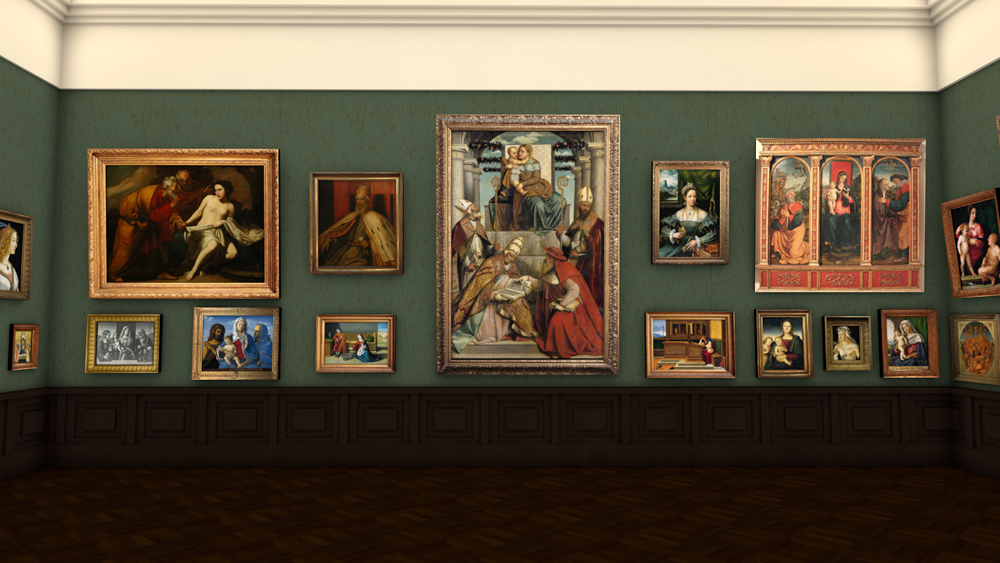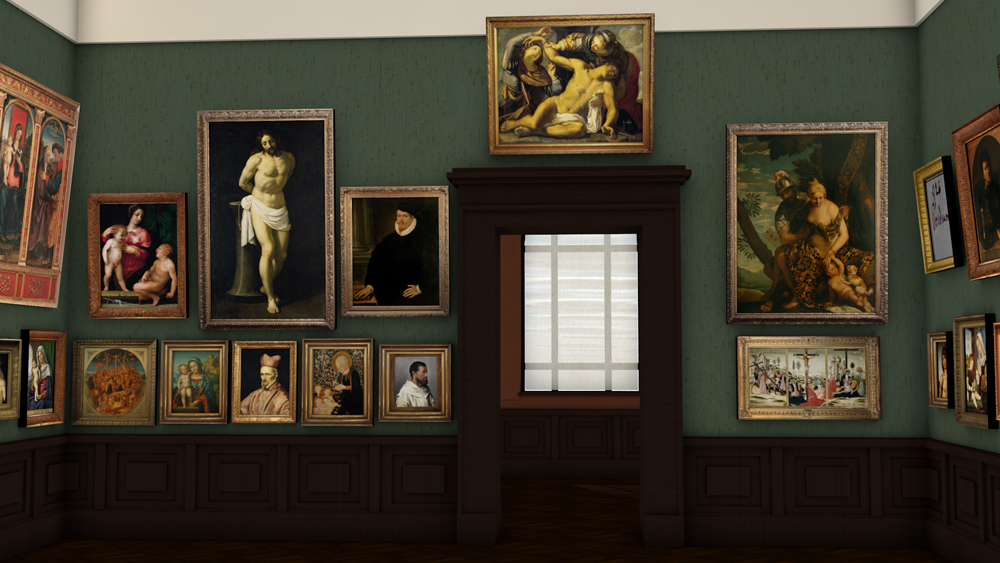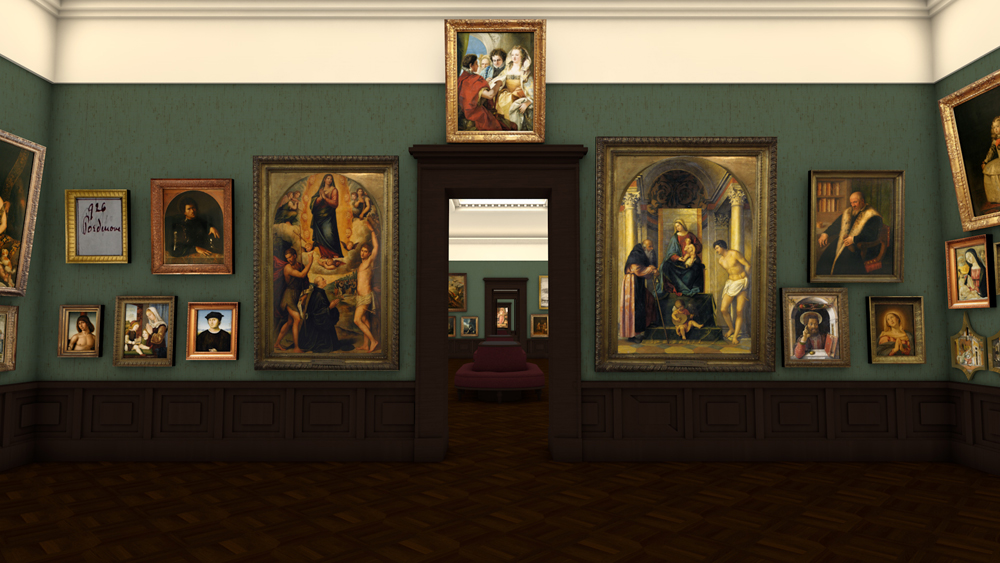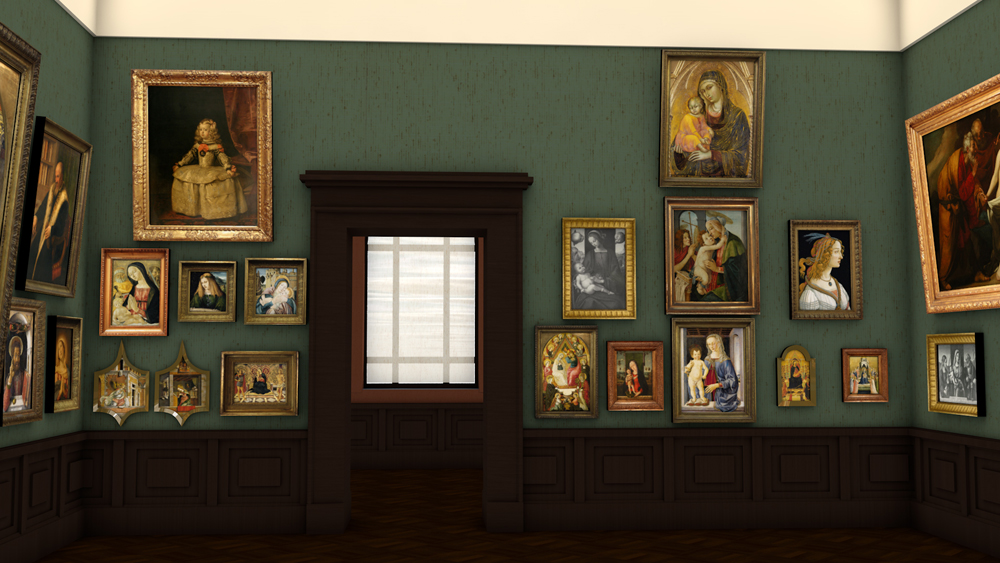1878 Small western skylight room
Madonnas
in contrast
The small skylight room on the western side promised an intensive experience of Italian painting. The ensembles, featuring extreme contrasts, showed surprising connections between paintings from the late fourteenth century up to Baroque art, and invited visitors to make comparisons.
In the centre stood Moretto’s altarpiece with the four Latin Church Fathers. It constituted the end of the tour through the western wing and was, as a critic lauded after the opening, “just entirely” visible through the door (Valentin 1879, p. 120). It was flanked by Macrino d’Alba’s tripartite altarpiece on the right, and by a “Bathing Susanna”, at the time attributed to Jusepe de Ribera, on the left. These presumably only corresponded with each other with regard to their size. Presented below these works was Perugino’s “Madonna with Child and St John”, juxtaposed with Venetian variations by Giovanni Bellini and Cima da Conegliano, who had depicted the Virgin in half-length together with the Christ Child and other saints. This artistic theme was further expanded on the left. Depictions of the Virgin ranged from the oldest example by Barnaba da Modena, via Fra Angelico, Botticelli, and works that were considered to be Sienese, up to the “Praying Madonna” by the Roman Baroque painter Sassoferrato on the east wall. Surprisingly, this work was shown together with Andrea Mantegna’s “St Mark”. The pairings of paintings – crossing historical, thematic, and geographical boundaries – offer surprises elsewhere as well. The “Portrait of the Infanta Margarita”, at the time considered to be an original by Velázquez, was presented together with Venetian portraits on the south wall. It is a bigger challenge, however, to see the relation between profane history paintings, such as the “Mars and Venus” by Veronese, and the fifteenth-century, Sienese “Carrying of the Cross, Crucifixion and Lamentation”. The decorative factor was decisive, yet it is also clear that the upper and lower registers were often conceived separately from each other.






